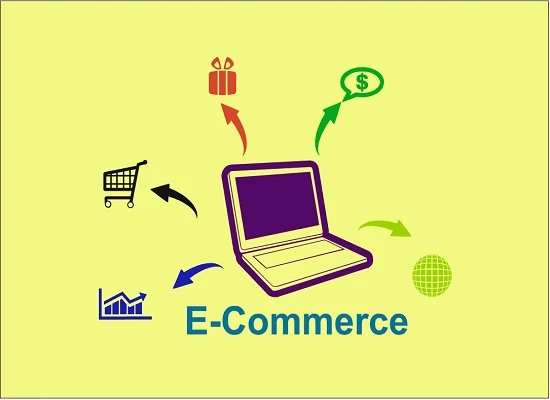What is e-commerce
The concept of e-commerce is the buying and selling of goods and services over the internet and other computer networks. The definition of e-commerce includes commercial transactions that take place electronically, such as using the internet or e-mail.
Electronic commerce is one of the most important aspects of doing business in the twenty-first century, e commerce has become an important part of the global economy, and statistics show that it is growing rapidly.
E-commerce is a term for any type of business transaction that involves the transfer of money or property from one electronic system to another.
 |
| What is Relationship Between Ecommerce and Digital Marketing |
Digital Marketing Automation Software Tools
The most common type of e-commerce is business-to-consumer business transactions, but there are also many other types of e-commerce, such as auctions, personal payments, music and video downloads.
Advantages of e-commerce
- Suitable for customers because they can shop from home 24 hours a day, seven days a week.
- The ability to reach a larger customer base: With an online store, a company can reach consumers all over the world This global reach also allows companies to sell to consumers in other countries.
- And Lower Costs: E-commerce can reduce a company’s operating costs by eliminating the need for a physical storefront, sales staff, and inventory. In addition, many ecommerce solutions are offered at a lower cost than traditional software.
- Faster delivery times.
Disadvantages of e-commerce
- Lack of personal interaction.
- Vulnerability to cyber attacks.
- The need for reliable internet connections.
- Increased exposure to computer viruses.
- It is difficult to build trust between companies and customers.
Marketing and SEO (Search engine optimization)
E-commerce and digital marketing
E-commerce is closely related to digital marketing, which is the use of digital channels to promote and sell products and services, that is, the process of promoting and selling products or services over the Internet. Digital marketing offers many advantages for businesses, such as the ability to reach a larger audience more quickly and at a lower cost than traditional marketing methods.
What are the 3 types of e-commerce
The e-commerce business is divided according to the products whether they are physical products, digital products, the services you sell, the parties you do business with, or even the platforms you operate on.
We will explain the three types of e-commerce to try to clarify some concepts of ecommerce.
Classification of e-commerce by participating parties
Briefly explain what each type of e-commerce means:
1. Business to business (B2B)
B2B ecommerce, both parties are companies, and the cooperation between them, for example, that the first company supplies to the other company a product or service that it needs to complete its production plan, in order to reduce commercial expenses, or factories that sell to retail stores.
2. Companies to Customer or Consumer (B2C)
This type of e-commerce is between companies and customers or consumers, and this type of e-commerce is the most popular type, or is the traditional pattern of commerce that we know, and retail e-commerce is part of this type, and it is known as Business to customer (b2c). It is e-commerce between companies and customers or consumers.
This type of e-commerce is one of the easiest and most profitable types of e-commerce, and due to the increase in the use of the Internet all over the world, this commerce is developing and growing rapidly.
One of the most famous b2c sites is Amazon, where companies and merchants display their products to reach the largest number of consumers.
3. Customer to Business (C2B)
This type of e-commerce is the opposite of the business-to-customer (B2C) type of e-commerce.
In this type, customers develop products and sell them to businesses, or provide their services to businesses.
This type of e-commerce depends on freelance work, such as designing a logo for a company, or writing a review of one of the company's products.
Companies pay customers for their services and products.
4. Customer to Customer (C2C)
This type of e-commerce is concerned with the relationship between consumers (customers), and is known as Customer to Customer (C2 C).
It includes all electronic transactions of services and products that are sold between consumers in general.
These transactions are carried out through an electronic platform for buying and selling such as Amazon, OLX, eBay, and these platforms are considered the electronic aspect, but the completion of the sale transaction is implemented in reality.
